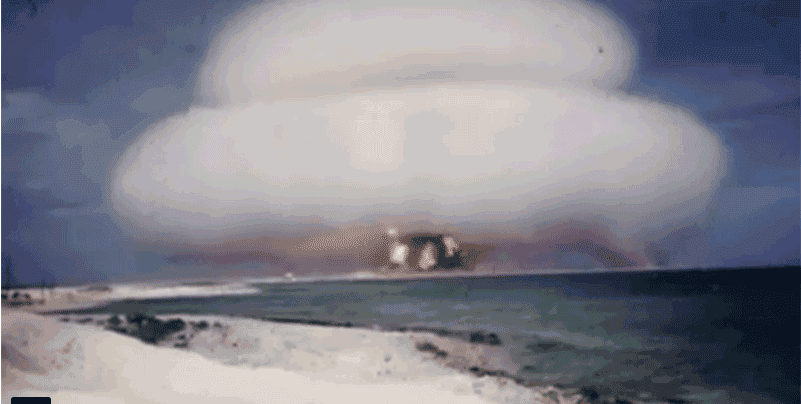There was a time when Uncle Sam was obsessed with its nuclear technology as the US Army looked to find more and more ways to win the unwinnable arms race! According to rough estimates, the United States conducted over 210 atmospheric nuclear tests from 1945 to 1962, while trying very hard to keep all that boom and mushroom hidden from the world.
On August 5, 1963, the United States, Soviet Union and Great Britain finally got tired of the dangerous Nuclear Arms race and signed the Limited Nuclear Test Ban Treaty, curbing down the testing of nuclear weapons in outer space, underwater or in the atmosphere. The fascinating footage of the 210 atomic blasts was put inside conservation boxes with a big red “Classified” stickers on them to be left rotting in the secret vaults around the country.
A weapon physicist, Greg Spriggs, from the Lawrence Livermore National Laboratory (LLNL) weapon physicist realised how these incredibly powerful and unique films – 7,000 of them to be exact – are at risk of being lost forever due to negligence and indifference. So he made it his mission to preserve the films and try to declassify them for the world to witness and learn.
And he has been incredibly successful as well in this 5-year project, with roughly 4,200 films already scanned, 750 of these declassified and 64 videos already available to be seen on YouTube.
“You can smell vinegar when you open the cans, which is one of the byproducts of the decomposition process of these films,” Spriggs said in a statement to Gizmodo.
“We know that these films are on the brink of decomposing to the point where they’ll become useless,” said Spriggs. “The data that we’re collecting now must be preserved in a digital form because no matter how well you treat the films, no matter how well you preserve or store them, they will decompose. They’re made out of organic material, and organic material decomposes. So this is it. We got to this project just in time to save the data.”
But Spriggs feels that we must hurry before it’s too late to save the other the remaining 3,480 films. And while most of them are being scanned and preserved, a process that will take another 2 years, the procedures of declassifying the footage requires military review which is even more arduous and time-consuming.
“It’s just unbelievable how much energy’s released,” said Spriggs. “We hope that we would never have to use a nuclear weapon ever again. I think that if we capture the history of this and show what the force of these weapons are and how much devastation they can wreak, then maybe people will be reluctant to use them.”


